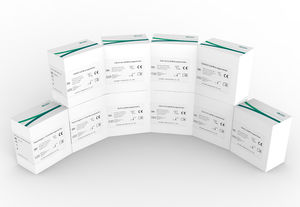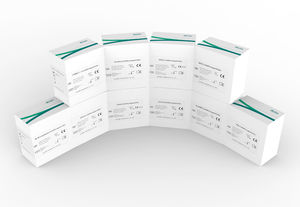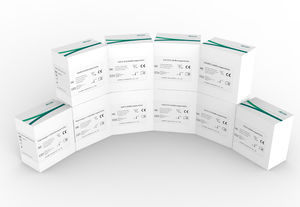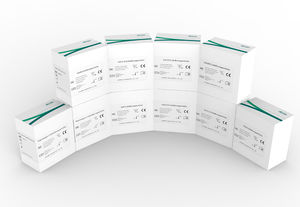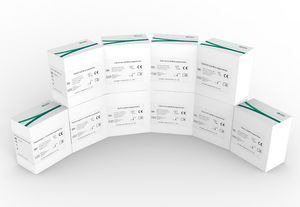
- Laboratory
- Laboratory medicine
- Breast cancer test kit
- Autobio Diagnostics
Breast cancer test kit menopausehormonalCEA
Add to favorites
Compare this product
Characteristics
- Applications
- for breast cancer
- Application field
- menopause
- Tested parameter
- hormonal, CEA, CA 15-3
- Sample type
- clinical, serum
Description
Female breast cancer has now surpassed lung cancer as the leading cause of global cancer incidence in 2020. The elevated incidence rates in higher HDI countries reflect a longstanding higher prevalence of reproductive and hormonal risk factors (early age at menarche, later age at menopause, advanced age at first birth, fewer number of children, less breastfeeding, menopausal hormone therapy, oral contraceptives) and lifestyle risk factors (alcohol intake, excess body weight, physical inactivity), as well as increased detection through organized or opportunistic mammographic screening.
Some serum tumor markers including CA15-3 and CEA have been reported to be elevated in some patients with breast cancer.
Clinical Significance
CA15-3 is recommended to be used in postoperative surveillance in patients with no evidence of disease, monitoring therapy in advanced disease, assessing prognosis. High preoperative levels (e.g. >30 U/L) always predict adverse outcome.[2]
CEA can be used in post-operative surveillance in patients with no evidence of disease, monitoring therapy in advanced disease, especially if CA 15-3/BR 27.29 is not elevated. And it can also be used in assessing prognosis that high preoperative levels predict adverse outcome.[2]
Catalogs
No catalogs are available for this product.
See all of Autobio Diagnostics‘s catalogsRelated Searches
- Autobio test kit
- Solution reagent kit
- Autobio blood test kit
- Autobio serum test kit
- Plasma assay kit
- Infectious disease detection kit
- Diagnostic reagent kit
- Respiratory infection test kit
- Autobio clinical test kit
- COVID-19 detection kit
- Clinical chemistry analyzer
- Antigen assay kit
- Bacteria reagent kit
- Automatic clinical chemistry analyzer
- Benchtop clinical chemistry analyzer
- Autobio cancer test kit
- Clinical reagent kit
- IgG test kit
- Laboratory detection kit
- Autobio cell test kit
*Prices are pre-tax. They exclude delivery charges and customs duties and do not include additional charges for installation or activation options. Prices are indicative only and may vary by country, with changes to the cost of raw materials and exchange rates.


